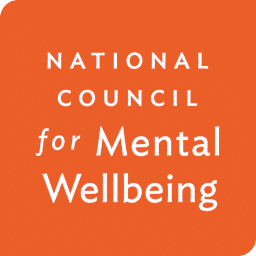Are you or someone you know struggling with mood swings, feelings of sadness, or a lack of interest in daily activities? If so, you might be dealing with a mood disorder. This article is written to explore the different types of mood disorders, their causes, and how they can be identified and treated. You’ll also learn about effective coping strategies and the importance of early intervention for yourself or a loved one.
Key Takeaways
- Mood disorders affect both children and adults, with the most common types being Major Depression, Dysthymia (dysthymic disorder), and Bipolar disorders.
- Recognizing signs & symptoms of each type of a mood disorder is key to diagnosis. Medications, psychotherapy & alternative therapies can help manage them.
- Care Plus New Jersey psychiatrists and clinicians help patients successfully navigate treatment of mood disorders such as chronic Major Depressive Disorder, Bipolar 1 and Bipolar 2 disorder.

Understanding Mood Disorders: Types and Characteristics
Mood disorders are a category of mental health disorders, in which emotional disturbances impacting a person’s mood is the primary clinical feature. Examples include:
- Major depressive disorder
- Bipolar disorders
- Persistent depressive disorder
- Cyclothymic disorder
- Disruptive mood dysregulation disorder
These conditions can affect both children and adults. According to the American Psychiatric Association, one in six people will experience depression in their lifetime. Major depression affects between 5% and 17% of the population, while other mood disorders have different prevalence rates.
It’s essential to differentiate between Mood disorders and other mental health conditions like Generalized Anxiety Disorder. Accurate diagnosis is crucial for appropriate treatment, and tools like the Hamilton Rating Scale for Depression (HAM-D), the Montgomery-Asberg Depression Rating Scale (MADRS), Patient Health Questionnaire (PHQ 9/A) and the Young Mania Rating Scale (YMRS) can be helpful in assessing mood disorders.
Major Depressive Disorder (MDD)
Major depressive disorder, also known as clinical depression, is one of the most common depressive disorders, characterized by persistent feelings of sadness, hopelessness, and a lack of interest in daily activities. It is estimated to affect around 8.3% of adults in the United States and between 5 to 17 percent of people globally. There are different forms of this disorder defined in the DSM-5 (Diagnostic and Statistical Manual). The DSM presents a severity specifier for Major Depressive Disorder. Severity levels are described as – mild or 5 symptoms (minimum for a diagnosis), moderate is 6 to 7 symptoms, and severe is 8 to 9 symptoms. Several types of MDD are:
- Melancholic depression
- Anxious depression
- Atypical depression
- Psychotic depression
- Seasonal depression
- Postpartum depression
What sets MDD apart from other mood disorders is its ongoing feelings of sadness, hopelessness, and a lack of interest or pleasure in activities. It is a separate diagnosis from bipolar disorder, which involves alternating episodes of depression and mania. Recognizing the signs and symptoms of MDD can help with early diagnosis and treatment, improving an individual’s depressed mood and quality of life.
Bipolar Disorder
Bipolar disorder, once known as manic depression, is a mental health condition characterized by alternating episodes of depression and mania, with varying degrees of severity. Bipolar disorders are mental conditions with four main variations. They are:
- Bipolar I
- Bipolar II
- Cyclothymic disorder
- Bipolar NOS (not otherwise specified)
A study done by the National Institute on Mental Health showed an estimated 2.8% of U.S. adults had bipolar disorder in the past year. Bipolar I disorder has a higher lifetime prevalence, while bipolar II disorder has a lower prevalence. Bipolar spectrum disorder (BPS) is the most common.
During a manic episode, individuals may experience an inflated sense of self-esteem, grandiosity, impulsivity, irritability, increased psychomotor activity, delusions, or hallucinations. Bipolar depression has certain characteristics which can help differentiate it from other forms of depression. These include an earlier age of onset, a rapid onset, multiple prolonged depressive episodes (more than 5 episodes), positive family history of bipolar disorder, the presence of a manic episode, and depression with mixed states.
Mood disorders diagnosed promptly play a vital role in receiving appropriate treatment and management of Bipolar disorder.
Persistent Depressive Disorder
Persistent Depressive disorder, also known as dysthymia, is a long-lasting, chronic form of depression with milder symptoms than Major Depressive disorder. This type of depression is characterized by a chronic or long-lasting moodiness that can vary in degree. In comparison to unspecified depressive disorder, Persistent Depressive disorder is estimated to affect up to 4% of the general population.
To be diagnosed with Persistent Depressive disorder in adults, they need to have had a depressed mood for most of the day, most days, for at least two years, plus at least two of the other DSM recognized depressive symptoms. Recognizing the signs and symptoms of persistent depressive disorder can help with early diagnosis and treatment, leading to better management of the condition.
Cyclothymic Disorder
Cyclothymic disorder is a milder form of bipolar disorder, characterized by less severe mood swings between depression and hypomania. Individuals with Cyclothymic disorder may experience either depression or hypomania for days or weeks, with a month or two of regular moods in between, or they might not have any “normal” periods in between. The exact cause of Cyclothymic disorder is unclear, but genetics may play a role.
Some symptoms of Cyclothymic disorder are similar to Premenstrual Dysphoric disorder (PMDD) because it is characterized by irritability, anxiety, depression, and emotional lability. However, PMDD usually only occurs about a week before the onset of menses followed by resolution of the symptoms after onset.
Cyclothymic disorder is estimated to affect up to 1% of the population in the United States, with a fairly even distribution between men and women. Identifying the signs and symptoms of cyclothymic disorder can help with early diagnosis and treatment, leading to better management of the condition.
The Science Behind Mood Disorders: Causes and Risk Factors
Mood disorders can be caused by a combination of genetic, biological, and environmental factors. Genetic and biological factors that might contribute to mood disorders include family history, brain chemistry imbalances, increased HPA (hypothalamic-pituitary-adrenal) activity, increased TSH (thyroid stimulating hormone), and certain drugs and medications. Chronic stress and a lack of social support are environmental factors that could be linked to mood disorders.
Neuronal plasticity allows neural networks to adapt, change, reorganize, and grow. A patient’s neuronal plasticity has a major effect on the physiology of mood disorders. It plays an important part in understanding and managing these conditions. Those with inadequate social support have signs of weakened neuronal plasticity, which can lead to mood disorders. Neuronal plasticity problems ranging from mild to moderate could be responsible for the onset of depression. Very severe impairment of neuronal plasticity can trigger depression symptoms as well as hypomanic or manic episodes. The amygdala and orbitofrontal cortex are the parts of the brain that control our emotions and feelings, and understanding the science behind mood disorders can help with early intervention and prevention.

Recognizing the Signs: Symptoms of Mood Disorders
Mood disorders can cause a wide range of symptoms, varying depending on the specific condition and episode type. Depressive episodes are marked by sadness and hopelessness; mania is characterized by extreme energy and impulsivity; and mixed episodes are characterized by a combination of both. It is crucial to recognize these varying symptoms in order to ensure proper diagnosis and treatment.
Depressive Episode Symptoms
During a depressive episode, individuals may experience:
- Persistent feelings of sadness
- Loss of interest in activities they used to enjoy
- Changes in appetite, weight, and sleep patterns
- Feelings of worthlessness and guilt
- Thoughts of death or suicide
Depressive episodes can differ in severity, with mild, moderate, and severe classifications based on the intensity and effect of the symptoms.
Note that symptoms of a depressive episode can vary in intensity and duration, and can also differ from one individual to another. A depressive episode usually lasts for at least two weeks, and individuals may also experience physical symptoms such as:
- Sleep problems
- Chest pain
- Fatigue
- Muscle aches
- Joint pain
- Digestive issues
- Dizziness or lightheadedness
- Back pain
Manic Episode Symptoms
Manic episodes in mood disorders are characterized by abnormally high levels of activity or energy, feeling extremely happy or excited, increased impulsivity, irritability, or overconfidence, needing less sleep, having racing thoughts, and talking more than usual. Individuals may also make poor or risky decisions during a manic episode. A manic episode can have a significant effect on cognitive functioning, potentially leading to impairments in areas like verbal and working memory, executive function/reasoning, problem-solving, attention, and memory.
A manic episode may vary in duration, lasting from a few days to several months. Recognizing these symptoms is key to enabling accurate diagnosis and effective treatment. Identifying the early warning signs of a manic episode can help with early intervention and management of mood disorders. Some common signs include:
- Decreased need for sleep
- Increased talkativeness
- Racing thoughts
- Feeling more energetic
By being aware of these symptoms, individuals and their healthcare providers can work together to develop a plan for managing a manic episode and promoting overall mental health.
Mixed Episode Symptoms
A mixed episode in mood disorders occurs when someone experiences both mania and depression at the same time. Symptoms of mixed episodes usually include:
- Irritability
- High energy
- Racing thoughts
- Overactivity or agitation
- Sadness
- Anxiety
- Restlessness
- Lack of energy
- Difficulty concentrating
- Feelings of uneasiness or disconnection from reality
To diagnose a mixed episode in mood disorders, individuals need to meet the criteria for both a manic episode and a major depressive episode at the same time, or experience symptoms from both mania and depression together or in rapid succession without any recovery period in between.
Mixed episodes can have a significant impact on an individual’s life, including:
- Increasing the risk of suicide
- Making it difficult to function in daily life
- Leading to cognitive impairment
- Lowering the quality of life.

Getting a Diagnosis: How Mood Disorders are Identified
Diagnosis of mood disorders involves a thorough evaluation by a mental health professional, including obtaining screening laboratory tests, medical history, and psychiatric assessment. Baseline labwork and a thorough medical history can help psychiatrists determine if there is an underlying medical condition contributing to mood symptoms. For example, certain medical conditions such as hypothyroidism or low Vitamin D can cause depressive symptoms. Additionally, a psychiatric evaluation typically includes a comprehensive diagnostic interview, a mental status examination, and multiple tests to measure the symptoms and gauge the intensity of the disorder.
Healthcare professionals differentiate between different mood disorders during the diagnosis process by using a combination of methods, such as:
- Diagnostic interviews
- Physical examination
- Assessment of symptoms
- Diagnostic criteria
- Collaboration with other professionals.
Prompt diagnosis is fundamental in ensuring effective treatment and management of mood disorders, leading to improved quality of life and reduced risk of complications.

Effective Treatment Options for Mood Disorders at CarePlus New Jersey
To diagnose mood disorders or to get ongoing medication management it is important to see experts that you trust. If Northern New Jersey is where your home is, CarePlus offers services to treat mood disorders such as depression and bipolar disorder, as well as additional mental health concerns. Our psychiatrists and clinicians are well versed with most common mood disorders and can help you determine the best course of action.
Treatment options for mood disorders include:
- Medications, such as antidepressants and mood stabilizers
- Psychotherapy approaches like cognitive-behavioral therapy
- Alternative therapies such as brain stimulation techniques
Working alongside a mental health professional to devise a personalized treatment plan that caters to the specific needs of the individual with the mood disorder is crucial.
Medications
Commonly prescribed medications for Mood disorders include:
- Antidepressants
- Mood stabilizers
- Anticonvulsants
- Antipsychotics
Selective serotonin reuptake inhibitors (SSRIs) are commonly prescribed for Major Depression. They work by blocking the reuptake of serotonin into neurons, increasing the amount of serotonin available and helping messages get transmitted between neurons more effectively.
Mood stabilizers, such as Lithium, Valproate, and Lamotrigine, are often used to manage and treat mood disorders, particularly Bipolar disorder. These medications work by regulating the neurotransmitters in the brain and can be effective at managing the symptoms of mood disorders. Close collaboration with a mental health professional is necessary to ensure that the right medication and dosage are prescribed to meet the individual’s unique needs.
Psychotherapy
Psychotherapy, or talk therapy, plays a critical role in treating mood disorders like depression and Bipolar disorder. Cognitive-behavioral therapy (CBT) is a widely researched and goal-oriented therapy that can be used alone or alongside medication. CBT helps individuals challenge their negative thoughts, come up with coping strategies, and ultimately improve their mood and overall well-being.
Other psychotherapy approaches, such as Interpersonal therapy and Family-focused therapy, have also been proven effective in managing mood disorders.
Alternative Therapies
In addition to medications and psychotherapy, there are alternative therapies that can be helpful in managing mood disorders. Exercise has been shown to have a positive effect on both physical and mental health, supporting nerve cell growth in the hippocampus, alleviating symptoms of depression, reducing the risk of developing mental illness, and improving sleep and memory. Acupuncture has been found to help treat mood disorders by improving many of the symptoms, including those of depression and anxiety, and can be a great addition to a comprehensive treatment plan.
Yoga has also been proven to be effective in managing mood disorders like depression and anxiety. Numerous studies and reviews have found that yoga can reduce depressive symptoms and improve overall well-being, mood, attention, and stress tolerance. While alternative therapies should not replace traditional treatments, they can be a valuable addition to an individual’s treatment plan, providing complementary support to medications and psychotherapy.

Navigating Life with a Mood Disorder: Coping Strategies and Support
Living with a mood disorder can be challenging, but developing healthy lifestyle habits and seeking support from friends, family, and mental health professionals can make a significant difference in managing symptoms and improving overall well-being. Coping strategies for mood disorders may include:
- Sticking to a routine
- Ensuring adequate sleep
- Engaging in self-care activities like breathwork, meditation, yoga, and journaling
- Connecting with friends and family
- Setting realistic goals
- Exercising and practicing mindfulness
It is essential to maintain open communication with mental health professionals and keep them informed about any changes in symptoms or concerns.
Prompt intervention and prevention play a significant role in managing mood disorders. Swift diagnosis and treatment can greatly enhance an individual’s quality of life and lessen the risk of complications. Early warning signs of mood disorder relapse include:
- Decreased need for sleep
- Increased talkativeness
- Racing thoughts
- Feeling more energetic
Learning and recognizing these early signs can help with early intervention and management. Embracing healthy coping strategies and seeking support can empower individuals to navigate life with a mood disorder confidently and successfully.

The Importance of Early Intervention and Prevention
Early intervention and prevention play a significant role in the management of mood disorders. A timely diagnosis and appropriate treatment can lead to:
- Better psychosocial functioning
- Reduced burden
- Prevention or delay of progression
- Reduction in symptom severity
- Enhancement of normal growth and development
- Overall improvement in quality of life
Identifying risk factors or prodromal symptoms early on can help stop the disorder from progressing and ensure proper care and support are provided.
Educating patients with mood disorders is critical to encourage adherence to medications and psychotherapy, maintain engagement in treatment, and minimize the risk of relapse. By raising awareness about mood disorders, encouraging early intervention, and promoting healthy coping strategies, individuals can take control of their mental health and experience a better quality of life.
Summary
CarePlus New Jersey offers psychiatry for those seeking help throughout Northern New Jersey. Scheduling an assessment for psychiatric care as a first time patient can be done via calling or our scheduling through our portal. Medication management can happen on an outpatient basis.
In conclusion, understanding mood disorders, their symptoms, causes, and treatment options is essential for individuals affected by these conditions and their loved ones. By seeking early intervention and adopting effective coping strategies, individuals can successfully navigate life with a mood disorder and improve their overall well-being. Remember, you are not alone in your journey, and there is help and support available to guide you towards a brighter future.
Frequently Asked Questions
The five types of mood disorders are Major Depression, Dysthymia, Bipolar disorder, Mood disorder due to a general medical condition, and Substance-induced mood disorder. These are common psychiatric disorders leading to an increase in morbidity and mortality.
The most common mood disorder is Major Depression. Bipolar disorder, Mood disorder due to a general medical condition, and Substance-induced mood disorder are also common types of mood disorders.
Depressive episodes are characterized by sadness and hopelessness, manic episodes by extreme energy and impulsivity, and mixed episodes by a mix of both.
Major depressive disorder is marked by intense, persistent feelings of sadness, while Persistent depressive disorder is a chronic form of depression with milder symptoms.
Medications, psychotherapy approaches, and brain stimulation techniques are all effective treatments for mood disorders.
Sources:
https://www.psychiatry.org/patients-families/depression/what-is-depression
https://www.ncbi.nlm.nih.gov/pmc/articles/PMC5875313/
https://www.nimh.nih.gov/health/statistics/bipolar-disorder
https://neuroscientificallychallenged.com/posts/what-is-the-hpa-axis
https://www.ncbi.nlm.nih.gov/pmc/articles/PMC9392461/
https://pubmed.ncbi.nlm.nih.gov/19541429/
https://www.sciencedirect.com/topics/neuroscience/neuronal-plasticity
https://www.ncbi.nlm.nih.gov/pmc/articles/PMC8228195/
https://www.health.com/condition/mental-health-conditions/mania

Tanya Lewis, MD – Vice President of Psychiatry at CarePlus New Jersey
Dr. Tanya Lewis presently serves as the Vice President of Psychiatric Services at CarePlus NJ, where she seamlessly combines administrative leadership with clinical expertise within the medical services department. Having obtained her medical license in 2008, Dr. Lewis consistently delivers exceptional care to her clientele.
During her tenure at CarePlus NJ, Dr. Lewis has distinguished herself by conducting comprehensive psychiatric assessments, offering insightful recommendations, and skillfully managing medication protocols for children, adolescents, and young adults. Her invaluable contributions make her an integral member of the CarePlus NJ team, as she steadfastly dedicates herself to the ongoing mission of providing psychiatric assistance to those in need.









